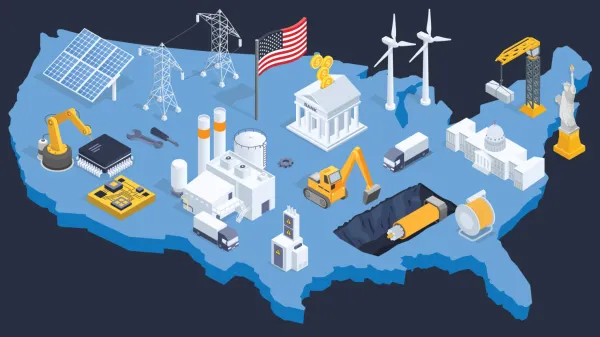Partnerships Likely to Be Deciding Factor in State Distribution of BEAD Funds, Say Experts
State and federal broadband policy experts agreed that partnerships would be instrumental to spending $42.5 billion in broadband funds.
Jericho Casper

KEYSTONE, Colo., June 7, 2022 – Public employees working at the state and federal level to distribute $42.5-billion available through the National Telecommunications and Information Administration’s Broadband, Equity, Access, and Deployment program said during a panel at the Mountain Connect 2022 Conference in May that applicants who prioritize meaningful partnerships will be more successful in their pursuit of funding.
When creating the scoring frameworks for the states of New Mexico and Illinois, Sandeep Taxali, program advisor to the Illinois and New Mexico broadband offices, said that he designed the grant scoring framework so that applicants gain extra points for partnerships.
“We want partnerships between ISPs that want to share a middle-mile network, partnerships between local ISPs and community stakeholders and the [program] champions [and] partnerships to foster adoption once the networks are built,” Taxali said.
In addition to partnerships that require local, state, and federal governments to work together, successful applicants are likely to be those that partner with individuals in-the-community to collect speed test data, said Sarah Bleau, broadband specialist at NTIA.
Further specific partnership advice
In many communities, municipal-owned network partnering with a private ISP to operate the network will provide solutions for communities that Taxali said have been ignored by traditional service providers. “We’d like to see more of those [partnership models],” he said.
He also urged a room full of hopeful applicants to be aggressive about seeking high levels of matching funds: States will award communities that bring money to the table or that combine government funding programs. “It’s imperative [that] communities step up and apply either their [American Rescue Plan] dollars or other government dollars,” Taxali said.
“All of the guidance that you need to develop the kind of proposals that will be easiest to fund are in the [notice of funding opportunity],” added Bill Maguire, who served as chief of staff for the Broadband Technology Opportunities Program at NTIA during the Obama administration.
“It’s no surprise that there are all these specific guidelines around local community engagement and stakeholder engagement, because the [NTIA] team that wrote the NOFO has been working with local governments over the past five to seven years. They understand how critically important these words like ‘stakeholder engagement’ are.”
But he urged applicants to make their “proposals easy for the program officers to say yes to. The way you do that is by making sure that your application suggests that the authors read the NOFO and understood the limitations and the expectations.”








